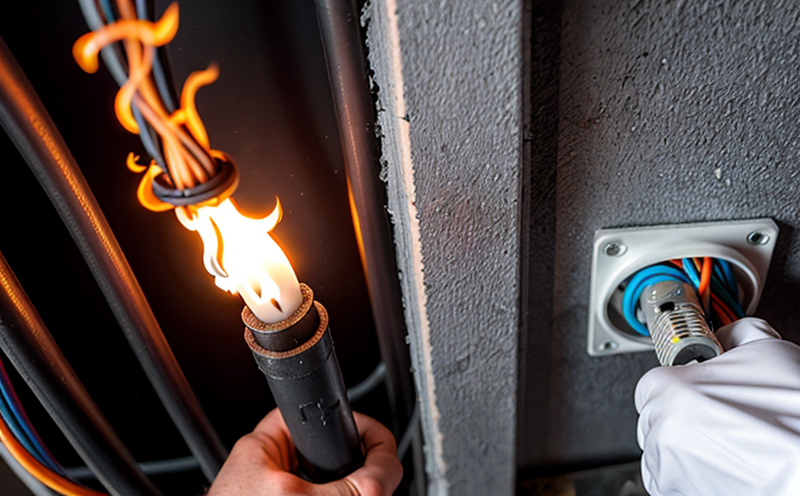Flammability Testing of Cable Accessories
In today’s world, where infrastructure and technology are expanding at an unprecedented rate, ensuring fire safety remains a critical concern. Cable accessories, being integral components in electrical systems, play a vital role in maintaining the integrity and reliability of these systems during emergencies. Flammability testing is one of the fundamental steps to ensure that cable accessories meet stringent safety standards and contribute effectively towards preventing fires.
Flammability tests are conducted using various methods depending on the type of cable accessory being evaluated. The goal is to determine how a material or component behaves when exposed to fire under controlled conditions. This helps in identifying its ignition temperature, flame spread rate, smoke generation, and other characteristics that could influence fire safety.
The testing process typically involves several stages: preparation of the specimen, application of heat or flame, observation of behavior, and measurement of parameters such as peak heat release rate (PHRR) and smoke production. Compliance with relevant standards like IEC 60332-1 ensures that test results are reliable and comparable globally.
For quality managers and compliance officers looking to ensure product safety and regulatory compliance, flammability testing is indispensable. It provides critical data about the fire performance of cable accessories which can then be used to improve designs or select materials more effectively. R&D engineers benefit from this information as well since it guides them in developing safer products. Additionally, procurement teams find value in ensuring suppliers meet these stringent requirements.
Accurate testing not only enhances public safety but also supports sustainable practices by promoting the use of fire-resistant materials that contribute to longer-lasting installations and reduced maintenance costs over time. By adhering to strict testing protocols, manufacturers can demonstrate their commitment to both safety and environmental responsibility.
Benefits
- Enhanced Safety: Ensures that cable accessories do not contribute to the spread of fire, thereby protecting lives and property.
- Compliance Assurance: Helps manufacturers meet international safety standards such as IEC 60332-1, enhancing market access for their products.
- Informed Design Decisions: Provides valuable insights into material choices that can lead to more robust and fire-resistant designs.
- Improved Reputation: Demonstrates a strong commitment to safety which builds trust with customers and stakeholders.
- Economic Savings: Reduces the risk of costly fires, mitigating potential losses from damaged assets or infrastructure repairs.
International Acceptance and Recognition
The importance of flammability testing extends beyond national borders. Standards such as IEC 60332-1 are widely accepted across the globe, ensuring that manufacturers can easily comply with regulations in multiple countries without having to undergo separate tests for each jurisdiction.
Many industries rely on these internationally recognized standards to ensure consistent quality and performance of their products. This international acceptance fosters greater collaboration between companies operating within different regions, promoting a more unified approach towards safety practices globally.
By aligning with these recognized benchmarks, businesses not only enhance their competitive edge but also contribute positively towards establishing safer environments everywhere.
Environmental and Sustainability Contributions
In addition to its role in ensuring immediate safety during fires, flammability testing plays a crucial part in promoting sustainability. The use of fire-resistant materials helps extend the lifespan of electrical installations, reducing waste generation and minimizing environmental impact.
By incorporating sustainable practices into their operations through rigorous testing procedures, companies demonstrate leadership in responsible resource management. This approach supports broader efforts towards creating greener industries while also contributing to global sustainability goals.
The combination of enhanced safety features with environmentally friendly materials makes flammability testing an essential tool for achieving balanced development that benefits both immediate human needs and long-term ecological health.





